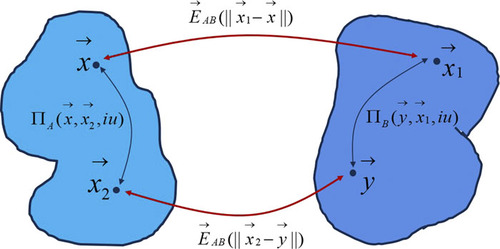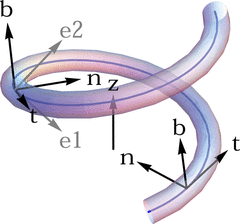
Chirality-induced spin selectivity (CISS) was discovered nearly 10 years ago, but so far, its precise microscopic origin has not been fully elucidated. In this presentation, we will provide an overview of our most recent activities in the field. First we will discuss, relying on a previous model by K. Michaeli and R. Naaman [1], an effective 1D model derived as the limit of a 3D quantum system with strong confinement and including spin-orbit coupling (SOC) [2]. We use adiabatic perturbation theory to provide a mathematically sound procedure applicable to a large class of spin-dependent continuum models and compute the corresponding spin polarization in the model. In the second part of the presentation, two issues will be addressed: a) experimental studies have clearly revealed that electronic exchange interactions play a key role in the magnetic response of chiral molecules. We have used spinpolarized density functional theory calculations to address the influence of exchange contributions to the interaction of helical molecules in periodic arrays as well as of helical molecules with magnetized substrates [3]. We show that exchange interactions result in differences in the interaction properties with magnetized surfaces, shedding light into the possible origin of two recent important experimental results: enantiomer separation and magnetic exchange force microscopy with AFM tips functionalized with helical peptides; b) A recent proposal to describe the mutual induction of charge and spin-density fluctuations in a pair of chiral molecules leading to intermolecular SOC. Within second-order perturbation theory these contributions manifest as an effective intermolecular exchange interaction scaling as R-6 with the intermolecular separation, similar to the London dispersion interactions [4].
References
[1] K. Michaeli and R. Naaman, J. Phys. Chem. C 123, 17043 (2019)
[2] M Geyer, R Gutierrez, G Cuniberti, J. Chem. Phys. 152, 214105 (2020)
[3] M. Geyer, R. Gutierrez, V. Mujica, J. F. Rivas Silva, A. Dianat, G. Cuniberti, J. Chem. Phys. 156, 234106 (2022)
[4] A Dianat, R Gutierrez, H Alpern, V Mujica, A Ziv, S Yochelis, O Millo, Y. Paltiel, G. Cuniberti, Nano Letters 20, 7077 (2020)







Chirality-induced spin selectivity (CISS) was discovered nearly 10 years ago, but so far, its precise microscopic origin has not been fully elucidated. In this presentation, we will provide an overview of our most recent activities in the field. First we will discuss, relying on a previous model by K. Michaeli and R. Naaman [1], an effective 1D model derived as the limit of a 3D quantum system with strong confinement and including spin-orbit coupling (SOC) [2]. We use adiabatic perturbation theory to provide a mathematically sound procedure applicable to a large class of spin-dependent continuum models and compute the corresponding spin polarization in the model. In the second part of the presentation, two issues will be addressed: a) experimental studies have clearly revealed that electronic exchange interactions play a key role in the magnetic response of chiral molecules. We have used spinpolarized density functional theory calculations to address the influence of exchange contributions to the interaction of helical molecules in periodic arrays as well as of helical molecules with magnetized substrates [3]. We show that exchange interactions result in differences in the interaction properties with magnetized surfaces, shedding light into the possible origin of two recent important experimental results: enantiomer separation and magnetic exchange force microscopy with AFM tips functionalized with helical peptides; b) A recent proposal to describe the mutual induction of charge and spin-density fluctuations in a pair of chiral molecules leading to intermolecular SOC. Within second-order perturbation theory these contributions manifest as an effective intermolecular exchange interaction scaling as R-6 with the intermolecular separation, similar to the London dispersion interactions [4].
References
[1] K. Michaeli and R. Naaman, J. Phys. Chem. C 123, 17043 (2019)
[2] M Geyer, R Gutierrez, G Cuniberti, J. Chem. Phys. 152, 214105 (2020)
[3] M. Geyer, R. Gutierrez, V. Mujica, J. F. Rivas Silva, A. Dianat, G. Cuniberti, J. Chem. Phys. 156, 234106 (2022)
[4] A Dianat, R Gutierrez, H Alpern, V Mujica, A Ziv, S Yochelis, O Millo, Y. Paltiel, G. Cuniberti, Nano Letters 20, 7077 (2020)





